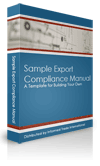Exporting Technical Data
While exporting grenade launchers to an unfriendly nation might be a cut and dried State Department licensing procedure, a more slippery and often significantly more treacherous export is that of technical data. With the evolution of the internet and an ever-shrinking world, this less tangible export is (in my opinion) far more dangerous to the national security of the US and thereby a bigger target for fines and penalties.
So what is technical data in the eyes of the US State Department? If you want the ITAR definition (which you should definitely read at some point) look it up in the ITAR – page 468. This definition to me has always meant things like:
- Schematics,
- Formulas,
- Blueprints,
- Flowcharts,
- Procedures, or
- Highly detailed technical descriptions
This type of information can be communicated via:
- Email,
- Fax,
- Phone conversations,
- Letters,
- Semaphore, etc.
Essentially, the idea behind the restricted export of technical information is that not only does the Department of State want to restrict the export of grenade launchers to unfriendly countries, but they also don’t want us telling other countries how to make their own!
If you’re involved with a company that communicates technical data to to overseas buyers, manufacturers, data centers, development centers, etc., please take a moment to consider the procedures you have in place to protect yourself. If you’re thinking now might be a good time to write some, our sample export compliance manual is a good place to start.
Posted on May 21st, 2008 by keeton
Filed under: ITAR


another area of leakage are conferences, trade shows and air shows.Our enemies hire consultants to get information from our engineers, academia, and military personnel.
Can you please add me to your list of emails that receive data and information? Thanks